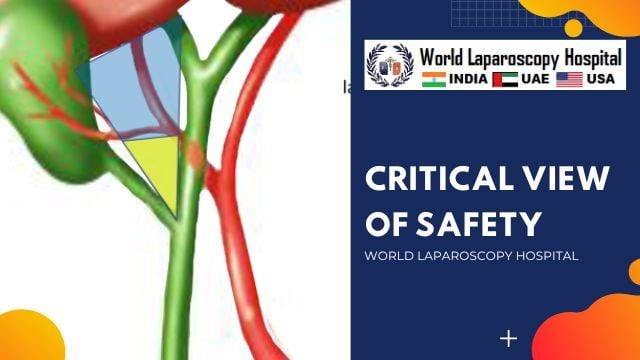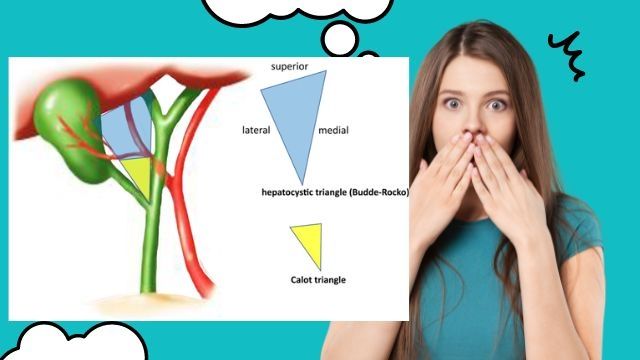Importance of Critical View of Safety in Laparoscopic Cholecystectomy

The critical view of safety (CVS) is a surgical technique that was developed to help reduce the risk of complications during laparoscopic cholecystectomy, which is the removal of the gallbladder using minimally invasive techniques. CVS involves ensuring a clear and unobstructed view of the anatomical structures of the gallbladder, including the cystic duct and the cystic artery, before proceeding with their dissection and division.
The three components of the CVS are:
Visualization of the cystic duct and artery: The surgeon must clearly visualize both the cystic duct and cystic artery before they are clipped and divided.
Dissection of the gallbladder from the liver bed: The surgeon must carefully dissect the gallbladder from the liver bed, ensuring that no other structures are being dissected.
Confirmation of the safety of the dissection: The surgeon must confirm that the dissection has been done safely before the gallbladder is removed.
By using the CVS technique, surgeons aim to reduce the risk of complications such as bile duct injury, bleeding, and bile leak, which can occur during laparoscopic cholecystectomy. The critical view of safety is now considered a standard of care during laparoscopic cholecystectomy and is recommended by many surgical societies and guidelines.
Achieving a critical view of safety (CVS) during Laparoscopic Cholecystectomy is crucial to avoid complications such as bile duct injury, but it is not always possible due to factors such as abnormal anatomy, inflammation, or stone impaction. Patients who are identified as having a higher risk of difficult Laparoscopic Cholecystectomy, based on preoperative tests such as neutrophil percent, lymphocyte percent, and abdominal ultrasound, should be operated on by experienced senior surgeons who can employ alternate surgical approaches or bailout procedures and may require intraoperative biliary imaging. Identifying difficult cases preoperatively can also help to refer patients to higher centers with expertise.
Studies have shown that the ability to achieve CVS is the most important factor in intraoperative decision-making and postoperative outcomes, as proceeding without achieving it is the most common cause of bile duct injury. Therefore, it is essential to identify patients who may be at risk for difficult CVS preoperatively to ensure that the procedure is performed safely by experienced surgeons. In addition, the study discusses alternative techniques that can be used when CVS cannot be achieved.
Laparoscopic Cholecystectomy is a widely performed surgical procedure, but bile duct injury is a serious complication that can occur. To prevent this, meticulous dissection and CVS must be achieved. When CVS is not possible, patients at risk for difficult Laparoscopic Cholecystectomy should be operated on by experienced surgeons with alternative techniques available. Identifying patients at risk preoperatively is essential for improving outcomes and reducing complications.
Laparoscopic cholecystectomy is a common surgical procedure used to remove the gallbladder. While this procedure is generally safe, there are risks associated with it, including the risk of bile duct injury. To reduce the risk of complications, it is important to use a critical view of safety (CVS) approach during laparoscopic cholecystectomy. In this essay, we will explore the importance of CVS in laparoscopic cholecystectomy and how it can improve patient outcomes.
What is Critical View of Safety (CVS)?
Critical View of Safety (CVS) is a surgical technique that involves careful identification of important anatomic landmarks during laparoscopic cholecystectomy to ensure the safe dissection of the gallbladder from the liver bed. CVS requires the surgeon to visualize and verify the cystic duct and artery before removing the gallbladder, and to ensure that the gallbladder is dissected free from the liver bed before it is removed.
Importance of CVS in Laparoscopic Cholecystectomy:
CVS is critical to the safe performance of laparoscopic cholecystectomy. Here are some of the reasons why:
Reduced Risk of Bile Duct Injury:
The primary benefit of using CVS in laparoscopic cholecystectomy is a reduced risk of bile duct injury. By carefully identifying and verifying the anatomy of the gallbladder and surrounding structures, surgeons can avoid accidentally injuring the bile duct during the procedure.
Improved Patient Outcomes:
By reducing the risk of complications, including bile duct injury, CVS can improve patient outcomes. Patients who undergo laparoscopic cholecystectomy with a CVS approach are less likely to experience complications and are more likely to have a successful outcome.
Standardized Approach:
CVS provides a standardized approach to laparoscopic cholecystectomy, ensuring that all surgeons follow the same procedure and reducing the risk of errors or complications due to individual variations in technique.
Improved Training:
CVS is a well-defined technique that can be taught to surgeons during their training. By incorporating CVS into surgical training programs, surgeons can learn how to perform laparoscopic cholecystectomy safely and effectively.
Limitations of CVS:
While CVS is an important technique in laparoscopic cholecystectomy, there are limitations to its use, including:
Learning Curve:
CVS requires specialized training and practice to perform effectively. There is a learning curve associated with the technique, which can make it more difficult for some surgeons to adopt.
Time-Consuming:
Performing CVS can be time-consuming, which can increase the duration of the surgical procedure. This can be a challenge for surgeons who are under pressure to complete procedures quickly.
Limited Applicability:
CVS may not be applicable in all cases of laparoscopic cholecystectomy, particularly in cases where there are variations in anatomy or other factors that make it difficult to visualize important landmarks.
Conclusion:
Critical View of Safety (CVS) is a critical technique in laparoscopic cholecystectomy that can reduce the risk of complications, including bile duct injury. By carefully visualizing and verifying the anatomy of the gallbladder and surrounding structures, surgeons can ensure that the procedure is performed safely and effectively. While there are limitations to the use of CVS, including the learning curve and time-consuming nature of the technique, its benefits in terms of improved patient outcomes make it an important component of surgical practice. As such, it is important for surgeons to receive specialized training in CVS and to incorporate this technique into their surgical practice.


